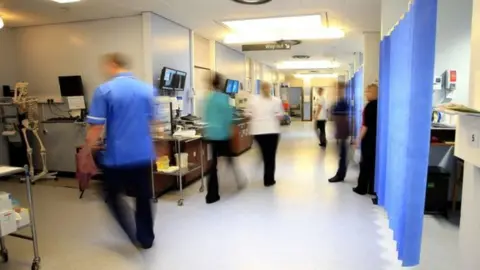NHS children services Birmingham have 'six times' more work
 PA
PAPeople working in children's services at a Birmingham health trust have more than six times the recommended workload, a watchdog has found.
Some practitioners at Birmingham Community NHS Trust had 600 cases each despite a guide limit of 100.
The regulator said workloads were "unmanageable" and deemed the children's services "inadequate" for safety.
The trust said the department was doing a "difficult job".
The overall rating of the trust, which provides services for adults, children, people with learning difficulties and rehabilitation needs as well as dental services, fell from its last inspection rating of "good" in 2014 to "requires improvement".
It delivers community-based healthcare services to 1.1 million Birmingham residents and specialist services to people across Sandwell, Dudley and Walsall.
An inspection carried out during May and June this year found that health visitors within children's services had between 370 to 500 patients each.
National guidelines suggest a limit of 250.
The CQC also found that "concerns raised by staff about their colleagues were not always investigated" and some staff "felt fearful of raising concerns".
"Systems and processes to safeguard children and young people were inconsistent", the report said, adding that "learning from incidents was inconsistent and may have resulted in harm."
However, the trust was found to be:
- Effective in monitoring care and treatment
- Caring with staff being kind and compassionate
- Responsive as services were tailored to meet the needs of the population
Richard Kirby, chief executive, said it was disappointing it has dropped to "requires improvement" overall and said: "We know that our children's teams are doing a difficult job in challenging circumstances."
The trust will be looking to improve the way it works in identifying and managing risk; understanding the experiences of patients and improving how it learns from incidents, he added.
